Many believe that a cactus is an unpretentious plant that does not require special care. However, everything is not so simple. These plants need care, like other deciduous crops that grow at home. There is an opinion that pots with cacti absorb harmful radiation, so they should be placed on desks near the computer. But you should not do this, because, being in such conditions, the plant can soon die. Next, we will consider in more detail how to care for cacti at home, so that they have long delighted you with their originality and beauty.
Content
How to care for a cactus in a pot: General rules
Features of home cacti
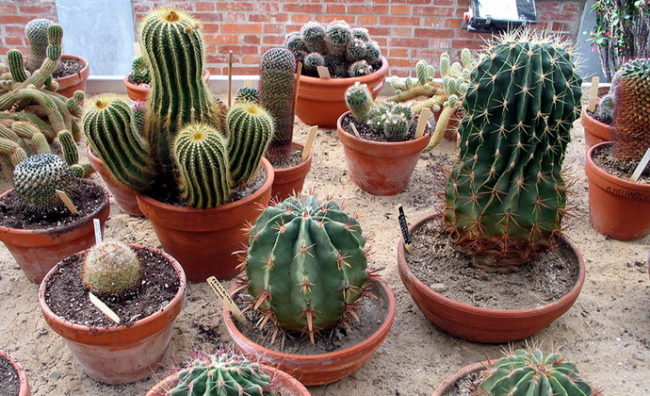
Before you find out how to properly care for a cactus, you should familiarize yourself with the features of this culture:
- These plants have a special structure. So, instead of leaflets, they have a thickened green stem that accumulates moisture necessary for the growth and life of culture. Given this, cacti can be in a dry and sunny place for a long time.
- The stem of the plant, depending on its variety, can have a different structure. It can be absolutely smooth, covered with wax raid, bugrous, with recesses, etc.
- Instead of leaflets, this culture has thorns, the size of which can vary from 2 mm to 6-7 cm.
- These plants are different in height. It can be both tall purchases and low -growing decorative "dwarfs".
- Cacti has a very interesting and beautiful flowering. For example, some varieties of this culture may bloom exclusively in the night period.
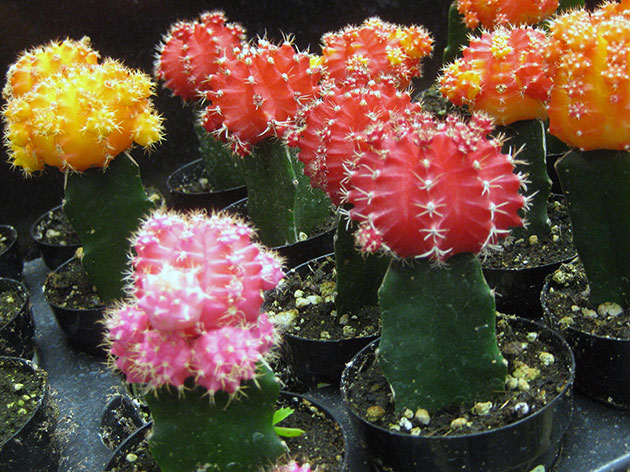
Cactus: care and watering conditions at home
Conditions for watering during cacti at home:
- Cacti does not like abundant watering, so if you did not bring moisture under the root of the plant according to the schedule, then this will not affect its "health".
- It is best to water cacti with melt water.
- In the spring and summer period, this culture should be watered every other day.
- In autumn and winter, cacti are watered once a week.
Types of home cacti

At home, a large number of cacti are grown. These beautiful plants can create an atmosphere of comfort and tranquility in the room. Next, consider the names and care for cacti.
In their structure, form and habitat, cacti are divided into several main groups:
1. Desert. These include several types:
- Cereuses.
- Mammilearia.
- Echinocactus.
- Echinoceres.
The plants of this group are characterized by the presence of thin leaves (thorns), which is due to their habitat.
2. Forest. This group includes:
- Epifillum.
- Decembrist.
- Discocactus.
- Prickly pear.
- Melokaktus.
Plants of this group in nature are found in a forest area, as well as on the slopes of the mountains. They are characterized by a well -developed root system, wide leaves, so that they are more like deciduous plants.
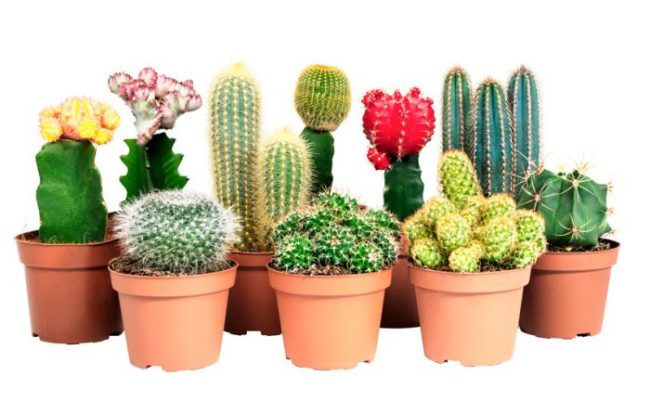
3. Indoor cacti. This group combines those species that are adapted to grow in indoor conditions and in greenhouses. It includes:
- Cactus truck.
- Cactus Shlumberger (Decembrist).
- Cactus echinopsis.
- Cactus Hymnocalcyium.
Cactus departure and propagation at home
If you wondered how to care for a flowering cactus, then keep in mind that an important part in care is to use the correct method of reproduction of culture.
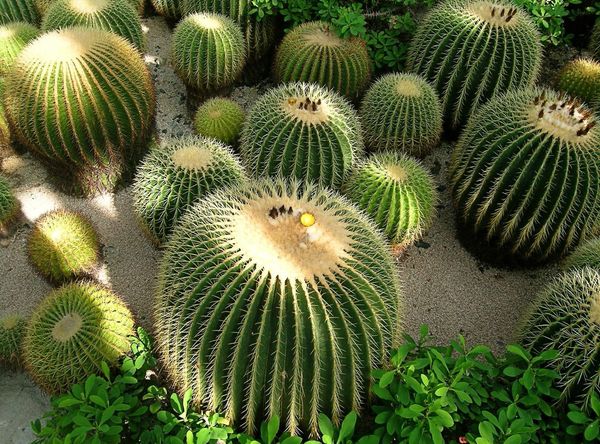
Most often, three methods of propagation of cacti are used:
- Seeds. Before planting seeds in a landing container, they need to be prepared. To do this, the planting material is heated and placed in a clean container. In the planting container, the soil should be well drained. For this, sand and crushed stone are used. Seeds are deepened into the soil and sprinkled with earth. Seeds are usually in a week.
- Cherging. They begin to prepare cuttings in the autumn. In this case, the overgrown shoots of the cactus are suitable as planting material. Cuttled culture cuttings are dried in a warm place for 1 week. Next, they are planted in landing containers with soil, which contains peat and sand. Usually seedlings are rooted in March or April.
- Vaccinations. This method is usually used to improve plant flowering. In this case, the cuts of the stock and the twist should be “at an angle”. In addition, the valve and blanket should be the same size. Next, the blanket is applied to the cut of the stock and fixed with a thin elastic band. The lock can be removed after 1 week.
Instructions: how to care for a cactus at home
Home cactus truck - care
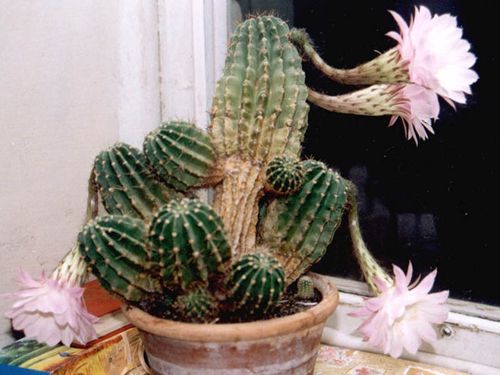
Care for the cactus of the truck is to maintain the optimum temperature of the room, humidity and illumination:
- This type of cacti is very photophilous, so you should keep it in a well -lit room, preferably from the south side.
- In addition to lighting, the plant needs fresh air, so after the onset of stable warm weather, you can transfer it to a well -lit balcony.
- Cactus of truck does not need frequent watering. In the summer, when humidity decreases and at the same time, biological processes are accelerated inside the plant, moderate watering is carried out (about 1 time every one and a half weeks). In the fall, spring and winter, irrigation intensity is reduced.
- Cactus top dressing is carried out from the beginning of spring to the end of summer. To do this, only specialized fertilizers for cacti must be used. They differ in the presence of minerals necessary for these plants, as well as a reduced nitrogen content.
- The cactus of the truck tolerates reduced humidity in the room very well. In winter, when heating is turned on, you can spray the plant, simulating the loss of dew.
- When caring for this plant, it is important to observe the temperature regime. It will be most comfortable at a temperature of +20 ° C ... +25 ° C, with its decrease to +8 ° C during the winter period. Red cactus care is carried out similarly.
Home cactus mammilearia - care
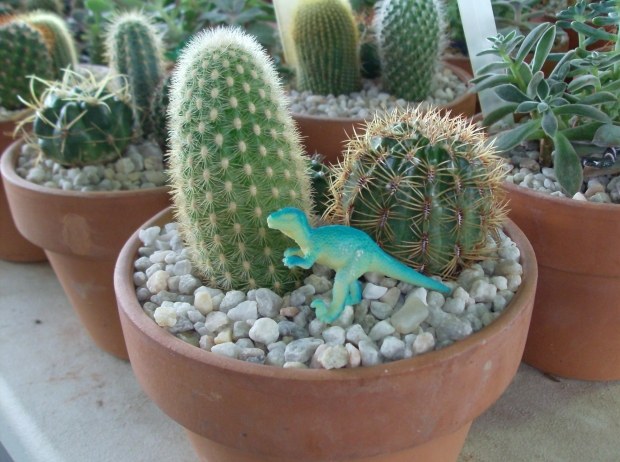
- To grow mammilearia, it is necessary to choose a bright place, however, the plant should be provided with protection from direct sunlight.
- In the summer, the air temperature for the plant is comfortable up to +25 ° C, in winter - up to +10 ° C.
- Watering should be moderate, in winter - meager. It is allowed to spray the plant from the spray gun. It is better to do this in the morning so that Vlaha managed to evaporate from the surface of the plant.
- Mammilearia is fed from the end of spring to the end of summer. For feeding, specialized mixtures and solutions are used.
- For normal plant growth, it is necessary to ensure its regular transplants. As the root system grows, when it begins to occupy the entire volume of the pot, the mammilearia is transplanted into a large container. As a rule, adults transplant 1 time every 4-5 years.
Homemade cactus Shlumberger - Care

- It is necessary to grow the cactus of the Schlumberger from the western or north side. The plant does not love strong illumination too much. If the windows overlook the east, then it is necessary to shake the window with a light tulle.
- During flowering, the Decembrist, and this is another name for this plant, does not need additional illumination. Reducing solar activity is a kind of signal for the plant about the time of the formation of floral kidneys.
- Water the cactus of the Schlumberger as they dry out. It is not worthwhile to constantly keep the soil wet, but also to allow strong drying of the roots. The irrigation intensity with the beginning of autumn is constantly reduced.
- Feeding when caring for a cactus of the Decembrist is carried out several times. The first - in the spring during intensive growth. To do this, use mineral complex fertilizers with a reduced content of nitrogen components. The second subcortex is carried out during flowering using special fertilizers for flowering plants.
- The most suitable soil for the cactus of the Schlumberger is loose, slightly acidic soil. It is in such conditions that this plant lives in the wild. Be sure to have sufficient drainage in a pot. In conditions of stagnation of moisture, the plant develops very poorly. For the preparation of the substrate, you can mix equal parts of peat, sand and deciduous humus.
Home cactus gymnocalicium - care

Care for the cactus of the gymnocalicium consists in proper watering and the choice of soil:
- Like other cacti, the gymnocalcyium grows best in slightly sour soils. For watering it, only soft water is suitable. The fact is that the high content of salts in hard water leads to soil alignment, which can cause poor development or death of the plant. Watering is carried out as the soil dry.
- The gymnocalcyium cactus is fed in the warm season (more often from late spring to the end of summer) using fertilizers for cacti. The frequency of top dressing is once every 2-3 weeks.
- This plant needs constant transplantation. The reason is not so much the rapid growth of the root system as the latrine of the soil. When transplanting, the old soil must be completely removed. The frequency of transplantation of young individuals is once a year, senior in 3-4 years.
- The cactus gymnocalicium does not like bright sunlight, and grows better in darkening.
Home cactus echinopsis - care

- This type of cactus feels very well in the sun, so it is better to choose the sunny side for its cultivation. When a persistent warm weather occurs, echinopsis can be taken out onto the street or balcony from the south side. At the same time, during the period of active vegetation, it is not recommended to change its location relative to the sun.
- The temperature regime is the same as for most cacti. Summer temperature up to +25 ° C, in winter - no more than +15 ° C.
- The intensity of watering a cactus depends on the growing season. In the summer, when the plant in sunlight evaporates a lot of moisture, the irrigation intensity increases to 1 time per week. It can not be allowed to dry out an earthen coma, especially during the cactus flowering period, this can cause the fall of buds.
- Cacti of cacti echinopsis is carried out only after the third year of life. The fact is that the underdeveloped root system is not able to learn enough fertilizers, so it makes no sense to introduce them.
Home cactus epiphyllum - care
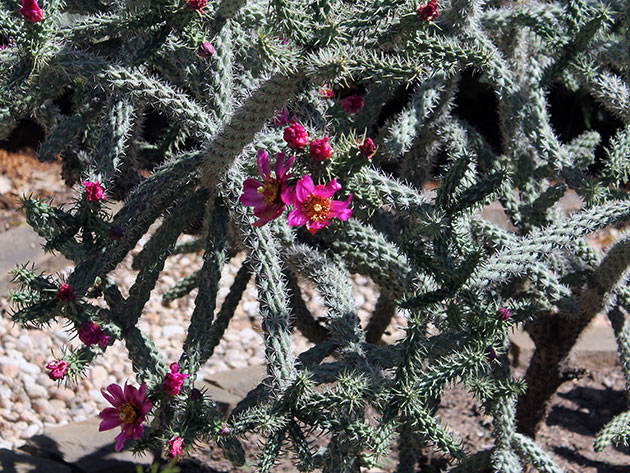
Taking care of this cactus at home is very simple:
- It is not advisable to expose it in too lit a place. The light should be bright, but scattered, the hit of direct sunlight is unacceptable.
- The temperature regime is the same as for all cacti. Humidity for epiphyllum does not play a big role. He tolerates room humidity quite normally. With an increase in temperature above +25 ° C, it is necessary to spray with warm water.
- Feeding the plants is carried out during the period of increased vegetation (from May to August). Fertilizers for cacti are added twice a month.
Home cactus milk - care
- Poles is one of the most unpretentious types of cacti, so too close care is not required. Although he loves light very much, it should not be substituted under direct sunlight.
- Watering is carried out only when the earthen lump is completely dry. In winter, I milk enough watering per month enough. Wiping milk is carried out quite rarely.
- The top dressing scheme is almost like most cacti: 1 time per week throughout the summer.
- Jolly does not like moisture stagnation in the ground, so when planting in a pot, you need to take care of the presence of drainage.
Home cactus D5 - Care

Care for the cacti of the mix of the D5 depends on what species of the plant are collected in it. Many flower stores try to select more homogeneous species to facilitate the care process. All standard recommendations for watering, top dressing, place of content and frequency of transplantation are applicable to them.
How to care for cacti in winter at home
Cartridges for cacti in winter are practically not carried out. At this time, the plants are at rest, and therefore the intensity of their watering is reduced. Fertening is carried out only for the Decembrist blooming in December-January (Cactus Schlumberger). During the rest period, it is advisable to provide plants with the conditions of a low temperature (not more than +15 ° C). In such conditions, the plant will not lose moisture.
How to care for a small cactus at home: illness and pests
It is very important when planting and caring for cacti, know what diseases the plant can get sick:
- Rot. It occurs with stagnation of moisture. In this case, the rhizome of the cactus should be treated with an antiseptic. In addition, it is necessary to stop watering culture for 7-10 days.
- Aphid. You can cope with this pest with the help of a soap-tabacian decoction.
- Mealybug. The affected plant should be treated with insecticide.
- Spider mite. You can cope with this parasite with the help of chamomile infusion, which treat the sick plant 3-4 times a week.
Cacti, care: photo

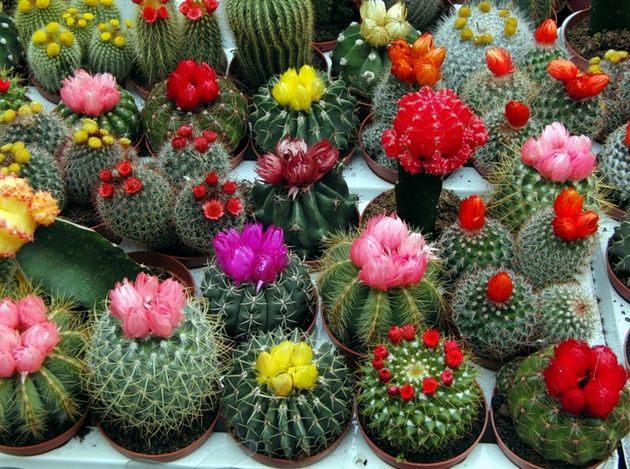
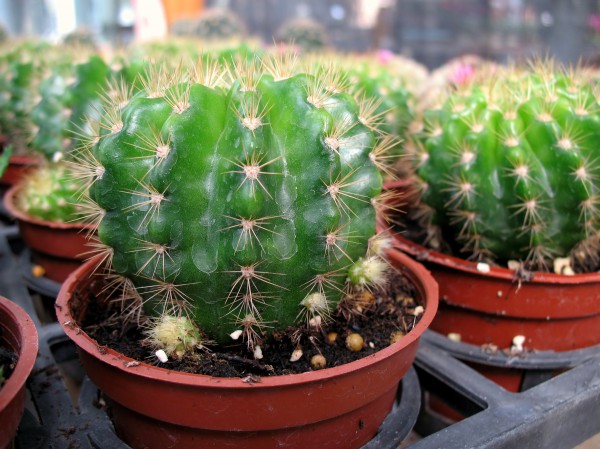









Comments
a couple of years ago, there was no side of metrogils from the same problem, there were no side effects ...
I’m not a fan of peeling at all, it saves from acne of metrogil, it also smoothes it ...
Great article! ...
I take the second course of the Capsules Climafite 911. The tides went very quickly. It became calmer, irritability went away and I sleep well ...
i also noticed - it is worth nervous, everything immediately affects the face. Therefore, I try to avoid conflicts and unpleasant people. Of the creams, I like Miaflow from wrinkles - smoothes not only small wrinkles ...